Related Research Articles

Sid Meier's Civilization is a 1991 turn-based strategy 4X video game developed and published by MicroProse. The game was originally developed for MS-DOS running on a PC, and it has undergone numerous revisions for various platforms. The player is tasked with leading an entire human civilization over the course of several millennia by controlling various areas such as urban development, exploration, government, trade, research, and military. The player can control individual units and advance the exploration, conquest and settlement of the game's world. The player can also make such decisions as setting forms of government, tax rates and research priorities. The player's civilization is in competition with other computer-controlled civilizations, with which the player can enter diplomatic relationships that can either end in alliances or lead to war.

A wargame is a strategy game in which two or more players command opposing armed forces in a simulation of an armed conflict. Wargaming may be played for recreation, to train military officers in the art of strategic thinking, or to study the nature of potential conflicts. Many wargames re-create specific historic battles, and can cover either whole wars, or any campaigns, battles, or lower-level engagements within them. Many simulate land combat, but there are wargames for naval, air combat, and cyber as well as many that combine various domains.

The Perfect General is a computer wargame published in 1991 by Quantum Quality Productions.

Master of Orion is a turn-based, 4X science fiction strategy game in which the player leads one of ten races to dominate the galaxy through a combination of diplomacy and conquest while developing technology, exploring and colonizing star systems.

Panzer General is a 1994 computer wargame developed and published by Strategic Simulations Inc. (SSI). It simulates conflict during World War II. The designers of Panzer General were heavily influenced by the Japanese wargame series Daisenryaku.

Lords of Conquest is a strategy video game published in 1986 by Electronic Arts. It is based on the 1982 board game Borderlands by Eon Productions and developed by Eon's software division. It was marketed with the slogan "Better than Risk!"
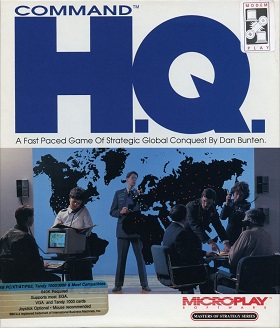
Command HQ is a real-time strategy world domination game. It was released in 1990 by Microplay Software and was created by designer Danielle Bunten.
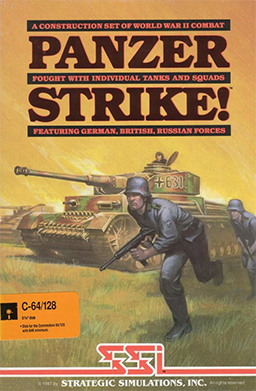
Panzer Strike is a 1988 tactical wargame that simulates small unit actions during World War II. It was made for Apple II and Commodore 64 and was released by Strategic Simulations.

Empire is a 1977 turn-based wargame with simple rules. The game was conceived by Walter Bright starting in 1971, based on various war films and board games, notably Battle of Britain and Risk. The game was ported to many platforms in the 1970s and 1980s. Several commercial versions were also released, often adding basic graphics to the originally text-based user interface. The basic gameplay is strongly reminiscent of several later games, notably Civilization, which was partly inspired by Empire.

North Atlantic '86 is a 1983 computer wargame written by Gary Grigsby and published by Strategic Simulations. The game covers a hypothetical conflict between NATO and the Soviet Union. A Macintosh version was released in 1986.

Close Combat is a 1996 real-time computer wargame developed by Atomic Games and published by Microsoft. Set during World War II, it simulates the conflict between the United States' 29th Infantry Division and Germany's 352nd Infantry Division after the Invasion of Normandy. The player controls an artificially intelligent army whose behavior is dictated by psychological models: each soldier makes decisions based on the circumstances of the battlefield and can disobey the player's orders.
Strategy is a major video game genre that emphasizes thinking and planning over direct instant action in order to achieve victory. Although many types of video games can contain strategic elements, as a genre, strategy games are most commonly defined as those with a primary focus on high-level strategy, logistics and resource management. They are also usually divided into two main sub-categories: turn-based and real-time, but there are also many strategy cross/sub-genres that feature additional elements such as tactics, diplomacy, economics and exploration.
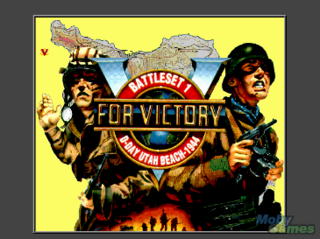
V for Victory: D-Day Utah Beach is a 1991 computer wargame developed by Atomic Games and published by Three-Sixty Pacific. It was widely lauded and repeatedly reviewed as the best wargame of its era. Its success led to three further games in the V for Victory series, and then the similar World at War series published by Avalon Hill.
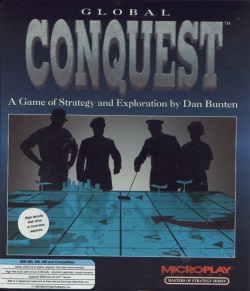
Global Conquest is a video game published by Microplay Software in 1992 for IBM PC compatibles. It is a version of Empire with numerous gameplay upgrades and a multi-player mode supported via modems.
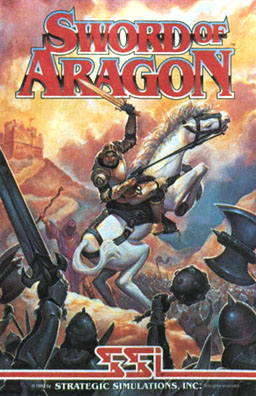
Sword of Aragon is a turn-based strategy and role-playing game developed and published by Strategic Simulations in 1989. It is also considered to be of the 4X genre. Set in the fictional land of Aragon, the games casts its protagonist as the duke of a city named Aladda. After assuming rule over the city and avenging his father's death, the protagonist embarks on a quest to unify the land through conquest. Accomplishing this goal entails developing cities, recruiting armies, and directing the troops on the fields of battle to victory. First published for MS-DOS, the game was ported to Amiga machines. Reception towards Sword of Aragon tended to be more positive than negative; reviewers called it an exciting game, but criticized its method of copy protection and cited problems with its documentation. There were also opinions that the game was more of a niche product, catering to hardcore strategists.

Warlords is a computer wargame released in 1990 for the Amiga and MS-DOS compatible operating systems, then in 1992 for Macintosh. It was designed by Steve Fawkner and developed by Strategic Studies Group. Warlords was followed by three sequels and several spinoffs. The game was based on designer Steve Fawkner's Dungeons & Dragons campaign.

The Great Battles of Alexander is a 1997 turn-based computer wargame developed by Erudite Software and published by Interactive Magic. Adapted from the GMT Games physical wargame of the same name, it depicts 10 of Alexander the Great's key conflicts, and simulates the interplay between Ancient Macedonian battle tactics and its rival military doctrines. Gameplay occurs at the tactical level: players direct predetermined armies on discrete battlefields, in a manner that one commentator compared to chess.

Operation Crusader is a 1994 computer wargame developed by Atomic Games and published by Avalon Hill.

Western Front: The Liberation of Europe 1944–1945 is a 1991 computer wargame developed and published by Strategic Simulations, Inc. It was designed by Gary Grigsby.
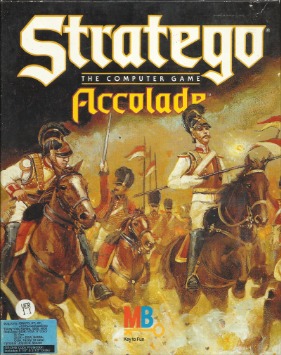
Stratego is a 1990 video game published by Accolade.
References
- 1 2 3 4 5 Emrich, Alan (July 1992). "Wargaming's Tiny Titan: Big Three Keeps WWII Simple". Computer Gaming World. 1 (96): 120–121.
- 1 2 3 4 Mitchell, Stuart (December 1992). "La Grande Armee & Big Three". Computer Games Strategy Plus . No. 25. p. 20. Retrieved 2024-07-14– via Internet Archive.